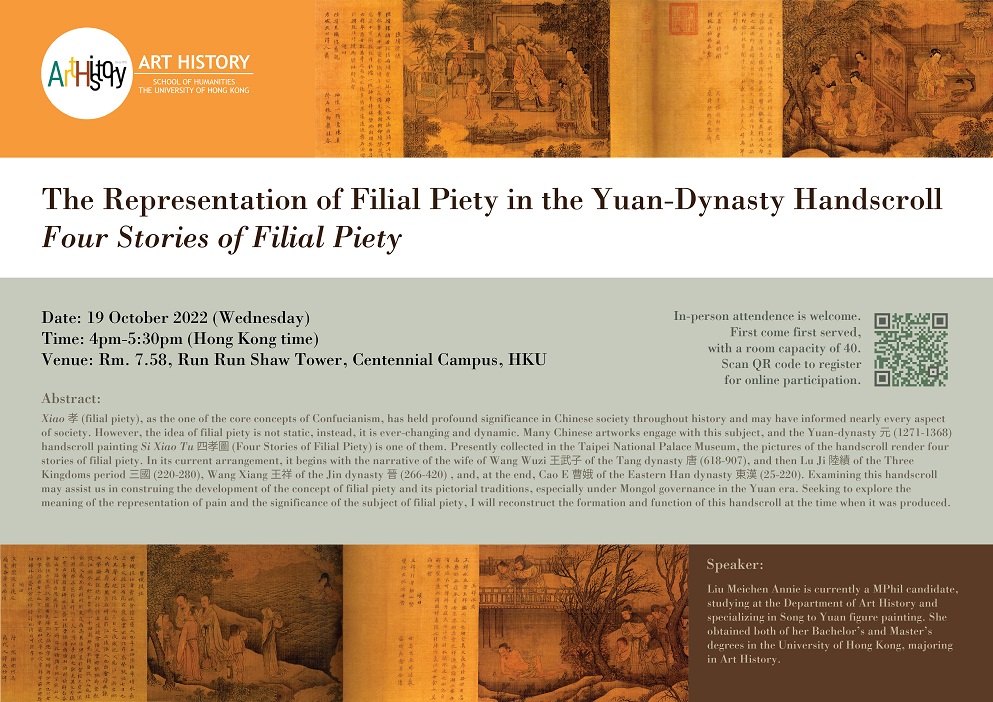
Department of Art History
The Representation of Filial Piety in the Yuan-Dynasty Handscroll Four Stories of Filial Piety
Date: 19 October 2022 (Wednesday)
Time: 4-5:30pm (HKT)
Format: Hybrid
Venue: Room 7.58, Run Run Shaw Tower, Centennial Campus, HKU (room capacity: 40, first come first served)
Register for online participation: https://hku.zoom.us/webinar/register/WN_W0kQmE6ySXy0dRrmkXXUHw
Abstract
Xiao 孝 (filial piety), as the one of the core concepts of Confucianism, has held profound significance in Chinese society throughout history and may have informed nearly every aspect of society. However, the idea of filial piety is not static, instead, it is ever-changing and dynamic. Many Chinese artworks engage with this subject, and the Yuan-dynasty 元 (1271-1368) handscroll painting Si Xiao Tu 四孝圖 (Four Stories of Filial Piety) is one of them. Presently collected in the Taipei National Palace Museum, the pictures of the handscroll render four stories of filial piety. In its current arrangement, it begins with the narrative of the wife of Wang Wuzi 王武⼦ of the Tang dynasty 唐 (618-907), and then Lu Ji 陸績 of the Three Kingdoms period 三國 (220-280), Wang Xiang 王祥 of the Jin dynasty 晉 (266-420) , and, at the end, Cao E 曹娥 of the Eastern Han dynasty 東漢 (25-220). Examining this handscroll may assist us in construing the development of the concept of filial piety and its pictorial traditions, especially under Mongol governance in the Yuan era. Seeking to explore the meaning of the representation of pain and the significance of the subject of filial piety, I will reconstruct the formation and function of this handscroll at the time when it was produced.

Leave A Comment